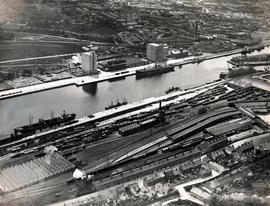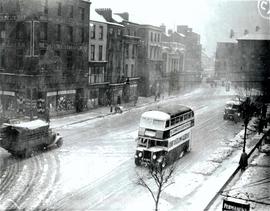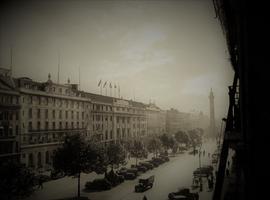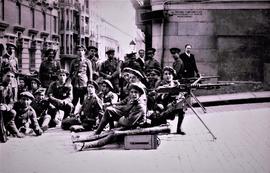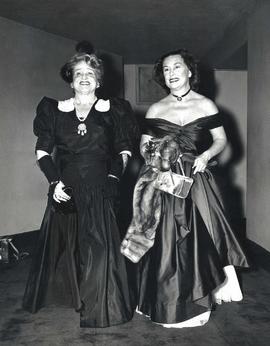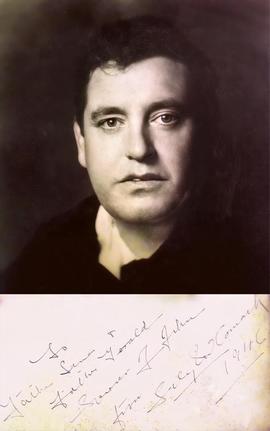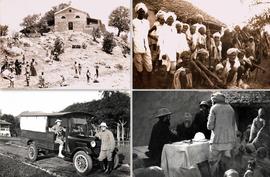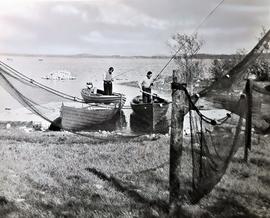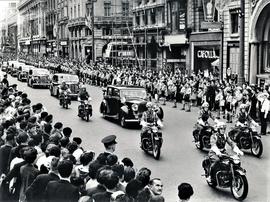Identificatie
referentie code
Titel
Datum(s)
- 1721-1978 (Vervaardig)
Beschrijvingsniveau
Omvang en medium
47 boxes, comprising 237 files, 132 items and 1,125 artefacts
Context
Naam van de archiefvormer
archiefbewaarplaats
Geschiedenis van het archief
Directe bron van verwerving of overbrenging
Inhoud en structuur
Bereik en inhoud
'The Capuchin Annual' was published by the Irish Province of the Capuchin Franciscans from 1930 to 1977. The purpose of the publication was clearly stated:
'"The Capuchin Annual" from its foundation presents Ireland to the world, sets forth the Irish way of life in all its phases: spiritual, cultural, intellectual, and social. It has been said that Ireland has a spiritual mission, and we believe that her mission is best fulfilled by showing her people, their customs, their literature, their art to the world. Our interest in Ireland exists beyond the confines of her shores to the achievements of Irishmen wherever their native genius has contributed to the glory of their own country or the country of their adoption'.
The 'Annual' was founded by Fr. Senan Moynihan OFM Cap. (1900-1970), a Kerry-born Capuchin friar who exuded a deep literary interest. Shortly after his ordination in 1928 he was appointed editor of 'The Father Mathew Record', a popular monthly publication of the Irish Capuchins which promoted the Order’s overseas’ missions (particularly in Africa) and carried articles supporting the cause of total abstinence which had as its champion Fr. Theobald Mathew OSFC (1790-1856), a charismatic friar who led a nationwide temperance campaign in the nineteenth century. Fr. Senan strove to create a higher grade, more literary publication. He was acquainted with many well-known Irish writers and artists and he secured permission from his superiors to publish the 'Annual' in 1930. Although its ethos always remained the promotion of Christian values and a Catholic way of life, the 'Annual' found many unique ways of exploring these subjects. In addition to the task of presenting Ireland and the Irish way of life to the world, 'The Capuchin Annual' also presented the Capuchin friars, their ideals, their history and their missionary endeavours to a wider audience. From its inception, the 'Annual' attracted a very high quality of contributing authors. It was a journal unique in Irish publishing containing many literary, historical, topographical, photographic, biographical, artistic, and cultural articles. Many Irish writers, artists and educators who later gained prominence such as Benedict Kiely (1919-2007), Francis MacManus (1909-1965), and Augustine Martin (1935-1995) received their first opportunities to publish in the 'Annual'. Other leading writers, artists, politicians and public figures who contributed to the 'Annual' included Pádraig Ó Siochfhradha (1883-1964), Pearse Hutchinson (1927-2012), Daniel Corkery (1878-1964), Alice Curtayne (1898-1981), Aodh de Blácam (1890-1951), Richard Mulcahy (1886-1971), Leon Ó Broin (1902-1990), Brian O’Higgins (1882-1963), and Francis Stuart (1902-2000).
Fr. Senan crafted 'The Capuchin Annual' into a finely tuned expression of Irish nationalism. His editorial office was located on Capel Street in Dublin and it became a regular meeting place for artists and writers. He was also an acquaintance of Éamon de Valera and his successor as leader of Fianna Fáil, Seán Lemass. De Valera supported the 'Annual' and appreciated its editorial alignment with the nationalist agenda espoused by the Fianna Fáil party. The 'Annual' also strove to develop a wider public appreciation of Irish art. With the assistance of his friend Thomas MacGreevy (1893-1967), a noted literary figure and director of the National Gallery of Ireland from 1950-63, Fr. Senan promoted the work of Irish artists such as Jack B. Yeats (1871-1957), Seán O’Sullivan (1906-1964) and Richard King (1907-1974). Fr. Senan was naturally gifted as a page-setter and the 'Annual' was regularly lauded. The 'Irish Times’ review of the 1937 edition complimented Fr. Senan as a ‘distinguished editor’ who had produced ‘one of the brightest magazines of the season’ ('Irish Times', 28 Dec. 1936). In 1942, Patrick Kavanagh (1904-1967) referred to the 'Annual' as an 'amazing phenomenon of modern political Catholic Ireland’ ('Irish Times', 10 Jan. 1942). The publication spread knowledge of and heightened awareness of Irish painting, sculpture, music, poetry and literature. Although its readership was predominately Irish, its circulation was international as it was frequently sent to Irish emigrants in the United States, Canada and Australia. The publication was immediately successful from a circulation point-of-view. Only 2,000 copies of the first edition of the 'Annual' were printed in 1930 and these were sold out within a month. By 1940 the print run had increased to 25,000 copies.
The 'Annual' was always published on high quality glossy paper, ensuring that reproductions of artwork were as good as one would expect in a fine arts journal. The publication increased in physical size by the 1940s. The 1930 edition had two hundred and thirty-six pages. This had increased to three hundred and ninety-eight pages in 1940. Throughout the difficult years of the Second World War (or ‘The Emergency’ as it was referred to in Ireland), the 'Annual' continued to be published, albeit on slightly coarser paper due to wartime restrictions. The high quality of the publication meant that it was a costly endeavour to produce. Printing full-colour reproductions of artwork along with the generous honorariums offered by Fr. Senan to contributors greatly increased production costs. Benedict Kiely was paid an exorbitant fee of thirty guineas for one poem about the 1916 Rising published in the 1942 edition. In 1936 Fr. Senan wrote to the Capuchin Provincial Minister to assure him that the publication was ‘solvent’. (CA CP-1-12-1). 21,000 copies of the 1937 edition were printed at a total cost of £2,500 with a profit of around £800. Despite these reassurances, it appears that Fr. Senan remained profligate in his spending. In 1954, he outlined a series of measures aimed at reducing the escalating debt of the Capuchin Publications Office (CA CP-1-5-1-2). This included selling off the office’s valuable collection of art (including three original paintings by Jack B. Yeats which he had purchased and reproduced in the 1942 'Annual'). These financial difficulties inevitably resulted in a strain on Fr. Senan’s health and he required hospitalization for periods in the late 1940s and in the early 1950s. In 1955 a decision was made at the Capuchin Provincial Chapter to remove Fr. Senan from the editorship of the 'Annual'. Fr. Nessan Shaw OFM Cap. (1915-1997), a fellow friar and friend, offered this assessment of the reasons for Fr. Senan’s departure:
'At the Provincial Chapter of 1955, Fr. Senan was transferred to the Capuchin Friary of the Most Holy Trinity in Cork with no definite assignment. Fr. Henry Anglin OFM Cap. was appointed editor of the 'Annual' with Fr. Felix Guihen OFM Cap. as manager. The appointment of a manager was significant because it considered that the financial arrangements and the editorship was too much for one man. That proved to be the case with Senan with the result that in spite of his best efforts the publication ran into serious debt, certainly from 1950 onwards (note that the 1950 and 1951 issues were amalgamated). It is my opinion that this caused him serious worry and very definite stress. Due to his constant work in the promotion of culture and the art and the necessity of contact with contributors of first-class quality, Fr. Senan lived a life somewhat removed from the lifestyle of the ordinary Capuchin. He had premises at 2 Capel Street which served both as an office and an art gallery. There might be found famous writers and painters etc. who contributed to the Annual – Jack B. Yeats, Seán Keating, Count John McCormack etc. In addition, there was maintenance staff, so the financial resources were not there to meet the demands. This was the real cause of his problems'.
Finding it impossible to continue as editor of the publication he had founded, Fr. Senan later requested secularization and left the Capuchin Order to become a diocesan priest in Australia. He arrived in Perth in 1959 following an invitation from Archbishop Redmond Prendiville (1900-1968), a fellow Kerryman. On arrival, Fr. Senan took up a position as chaplain to the Mercy Sisters at St. Anne’s Hospital in Mount Lawley, Western Australia (now St. John of God Mount Lawley Hospital). Archbishop Prendiville appointed him archivist of the Perth Archdiocese in 1962. He died in Perth on 26 July 1970 and was buried in Karrakatta Cemetery.
The appointment of Fr. Henry Anglin OFM Cap. (1910-1977) as editor of the 'Annual' in 1955 occasioned no real change in the ethos of the publication. The 'Annual' continued to publish an eclectic mix of content ranging from scholarly articles on the struggle for Irish independence to features extolling physical achievement, the national myth, rebellion, adventure, and spiritual and moral self-improvement. An awareness of the Capuchin Order’s commitment to the missionary work of the church explained much of the publication’s content as did an adherence to the predominantly conservative culture of the Irish state. Fr. Henry reflected on the 'Annual’s' purpose in 1965 as a publication ‘of prestige value … run by an Order on a shoe-string but produced as a Catholic and patriotic effort which has, I have no doubt, done much good for these objects over thirty years’ (CA CP-1-5-2-20).
Under Fr. Henry's editorship, the 'Annual' cemented its position as a popular cultural journal. He greatly expanded content which examined events associated with the Irish Revolution. The 1966 edition published detailed articles, profusely illustrated, on the 1916 Rising. The 1967 edition offered a striking pictorial record of the nationwide commemorations marking the fiftieth anniversary of the insurrection. Reproductions of contemporary photographs were also used to illustrate articles which reflected upon the ‘resurgence of the national spirit of Ireland after the 1916 prisoners were released’. More than two hundred and fifty pages of the 1970 edition were given over to memorializing key figures and events in the War of Independence. These anniversary features provided plenty of scope for forthright displays of national sentiment. Comparatively little was published on the contested history of the Civil War. Like Fr. Senan before him, Fr. Henry maintained the 'Annual’s' decidedly republican perspective. In a reassuring letter to the leading Fianna Fáil politician, James Ryan (1891-1970), Fr. Henry remarked that ‘the tradition of "The Capuchin Annual", as you know, has always been along the other [republican] side, and it is my intention that it shall remain so’ (25 Feb. 1969. CA CP-1-5-1-8).
'The Capuchin Annual' presented an unusual form of miscellany. Its extended length, designed to meet the needs of an annual publication, ensured that it exhibited a broadly conservative and nationalistic ideology in a comprehensive fashion. However, its goals of educating and elucidating in areas beyond the narrow confines of the prevailing culture of the state resulted in a varied mix of religious, literary, historical and artistic content. The 'Annual' attracted a readership who normally would not have even glanced at what was, outwardly, a religious journal. The renowned Irish playwright and critic, George Bernard Shaw (1856-1950), was an avid reader of the 'Annual', and it was one of the few Irish periodicals he subscribed to (CA CP-1-6-9). The final edition of the 'Annual' was published in 1977. A cursory note in this issue attributed its demise to the increasing costs of production. A ninety percent increase in printing costs from 1973-76 made the continued publication of the 'Annual' economically unviable. The print-run in 1976 (about 6,300 copies) cost over £14,500 and arrears in the Publications Office were running at over £1,200 per annum. Despite increases in the retail price of the periodical, it was clear that such losses were not sustainable. Many contributors, academics and literary critics lamented the journal’s demise. Fr. Henry limited himself to expressing an opinion that the decision to cease publication was a ‘mistake’ (CA CP-1-5-1-15). He died on 30 May 1977 just a few months after completing work on the final edition.
'The Capuchin Annual' was one of the most widely read Irish literary publications of the twentieth century. Though Irish-Ireland in its politics, the journal was never narrowly Catholic. The deployment of a wide range of topics ensured that it could not be easily located within the prevailing periodical culture of the period. Interested primarily in literature, history and art, it also took an astute view on issues of social and political import. The complete run of 'The Capuchin Annual' (1930-1977) has been digitised and is now freely accessible online.
'The Father Mathew Record' (later 'Eirigh')
'The Father Mathew Record' was a monthly periodical published by the Irish Capuchins. The 'Record' began publication in January 1908 and was founded by Fr. Aloysius Travers OFM Cap. (1870-1957). The stated aim of this popular magazine was to ‘record, month by month, the efforts made by the Father Mathew Total Abstinence Association and the Father Mathew Hall to advance the sacred cause of temperance’. Fr. Senan Moynihan OFM Cap. was appointed editor in 1928. Under his editorship, the 'Record' increased the amount of coverage of the Capuchin overseas' missions, and by 1934 circulation had increased to 12,000 copies a month. During the Second World War foreign mission reportage was curtailed and, in its place, there was a greater emphasis on Franciscan spirituality along with articles on Irish culture, art and literature. Around this time, Fr. Gerald McCann OFM Cap. (1910-1948) assumed the editorship of the 'Record' leaving Fr. Senan to concentrate on the production of 'The Capuchin Annual'. Fr. Gerald was also a gifted artist and his humorous depictions of Franciscan life were regularly published in both the 'Annual' and in the 'Record'. 1967 marked the last year of the publication under the title of 'The Father Mathew Record'. Following his appointment as editor in 1967, Fr. Donal O’Mahony OFM Cap. (1936-2010) decided to broaden the appeal of the Capuchin publication and sought permission to change the name and enhance the content of the 'Record' to reflect current ideas about social and cultural issues affecting Christian living. From January 1968 the periodical was known as 'Eirigh' and it continued to be published by the Irish Capuchins until December 1973.
Collection Content:
'The Capuchin Annual' was published from 1930 to 1977. It only ever had two editors, Fr. Senan Moynihan OFM Cap. (1900-1970) and Fr. Henry Anglin OFM Cap. (1910-1977). The distinctive cover illustration of St. Francis and the wolf was designed by Seán O’Sullivan RHA (1906-1964). The Three Candles Press founded by Colm Ó Lochlainn (1892-1972) printed the first three issues of the Annual. John English & Co. of Wexford assumed printing responsibilities from 1934 until 1957, and from 1958 until the final issue in 1977 it was printed by Dollard Printing House in Dublin.
Very many of the surviving records in 'The Capuchin Annual' collection relate to the editorship of Fr. Henry Anglin OFM Cap. who assumed responsibility for the Capuchin publication in 1955 following the resignation of Fr. Senan Moynihan OFM Cap. Fr. Senan subsequently settled in Australia in 1959. It has not been ascertained why so little of the archive associated with Fr. Senan’s editorship of the 'Annual' has survived. Fr. Henry noted Fr. Senan’s practice of ‘returning to all writers any manuscripts he had received and had not paid for’ (25 Nov. 1954. CA CP-1-5-2-1). It also appears that Fr. Senan did not maintain much contact with the Capuchin Publications Office following his departure for Australia. Many years later Fr. Henry affirmed that Fr. Senan ‘has had nothing to do with this place for over twenty years’ (21 July 1976. CA CP-1-5-1-15). It is conceivable that Fr. Senan took much of his personal archive (including papers relating to the operation of the 'Annual') with him to Australia. The Archives of the Catholic Archdiocese of Perth (Fr. Senan was appointed archivist in 1962) confirmed that he died without making a will and that his papers were subsequently auctioned and dispersed following his death. In an article by Ormonde D.P. Waters on the Fenians in Australia published in 'Seanchas Ard Mhacha' in 1996, it is noted that Fr. Senan was a ‘dedicated Fenian researcher’ and that ‘his very specialized library was scattered in a second-hand bookshop shortly after his death’. In 2003 the National Library of Ireland acquired manuscript drafts of two poems ('The Mother' and 'The Fool') by Patrick Pearse (1879-1916). The Library purchased the manuscripts from the Archdiocese of Perth. The provenance note suggested that these manuscripts were gifted by Pearse’s sister, Margaret, to Fr. Senan before he left for Australia. A recent discovery by Professor Richard Sharpe of the first printing of Brian Merriman’s (c.1747-1805) 'Cúirt An Mheán Oíche' ('The Midnight Court') in the National Library of Ireland also refers to the prior ownership of ‘Fr. Senan Moynihan, Saint Anne’s Hospital, Mount Lawley, Western Australia’. Other material with a direct provenance to Fr. Senan (including an autograph poem presented to the Capuchin friar by Donagh MacDonagh, son of Thomas MacDonagh, the executed 1916 Rising leader) has been offered for sale at auction. This would seem to support the contention that many of the papers and ephemera of cultural and historical significance acquired by Fr. Senan during his time as editor of 'The Capuchin Annual' were dispersed and sold in the years after his death.
Many of the records held in the Irish Capuchin Archives are draft articles received by Fr. Henry Anglin OFM Cap. for publication in the 'Annual'. A significant twentieth-century photographic archive is also extant. The collection also includes volumes containing copies of Fr. Henry’s outgoing letters along with financial records dating from the 1960s until the closure of the publication in 1977. A very large assemblage of ephemera in the form of photoengraving plates and stereotype printing blocks is also extant in the collection. These were likely returned to the Capuchin Publications Office by the firms responsible for the printing of the 'Annual'. The survival of certain record series is seemingly haphazard. In 1976 Fr. Henry referred to the destruction of ‘many periodicals and papers’ when the Publications Office moved from Father Mathew Hall to new premises adjacent to the Capuchin Friary on Church Street. (28 Apr. 1976. CA CP-1-5-1-15). The surviving records were subsequently transferred from the Publications Office following its closure. It is very likely that this transfer occasioned a further loss of material as the Capuchins had not yet acquired a suitable space for the storage of their archives.
Waardering, vernietiging en slectie
Aanvullingen
Ordeningstelsel
The papers in this collection were transferred from the Capuchin Publications Office in a very haphazard fashion and much of the original order was lost. The material has now (2019) been catalogued and a new arrangement imposed upon the fonds. The collection has been divided into two principal series. The first series comprises records relating to 'The Capuchin Annual' (1930-77). This series has been divided into fifteen sub-series. The papers in each of these sub-series represent a distinct grouping arranged according to document or record type, activity or subject matter. The final sub-series comprises many three-dimensional objects in the form of metal stereotypes and photoengraving plates (mounted on wooden blocks) used for illustrative and design purposes in the printing of the 'Annual'. The second series includes a significantly smaller collection of records relating to 'The Father Mathew Record' (from 1968 titled 'Eirigh'), a periodical published by the Irish Capuchins from 1908-73. This series has been divided into six sub-series arranged according to document type and form of literary submission to the publication. All the papers within the various divisions have been arranged chronologically.
Voorwaarden voor toegang en gebruik
Voorwaarden voor raadpleging
Access is open to bona fide researchers. Records containing personal information are subject to access restrictions.
Voorwaarden voor reproductie
Taal van het materiaal
- Engels
- Iers
Schrift van het materiaal
Taal en schrift aantekeningen
Fysieke eigenschappen en technische eisen
The papers are generally in good condition
Toegangen
Descriptive catalogue
Verwante materialen
Bestaan en verblifplaats van originelen
Bestaan en verblijfplaats van kopieën
Related units of description
Notitie Publicaties
Digitized copies of the entire run of 'The Capuchin Annual' (1930-77) can be accessed at: http://www.capuchinfranciscans.ie/capuchin-annual-1930-1977/
Notitie Publicaties
TCD Library: 'The Capuchin Annual' and 1916. https://www.tcd.ie/library/1916/the-capuchin-annual-and-1916/
Sonya Perkins: ‘‘Where and what is Ireland? / The Capuchin Annual and the editorship of Fr. Senan Moynihan, 1930-54’ in Felix M. Larkin and Mark O’Brien (eds), 'Periodicals and journalism in twentieth-century Ireland: Writing against the grain' (Dublin: Four Courts Press, 2014). https://www.fourcourtspress.ie/books/2014/periodicals-and-journalism/
Susan Schreibman: The Thomas MacGreevy Archive. This digital archive reproduces many of the articles written by Thomas MacGreevy (1893-1967) for both 'The Capuchin Annual' and 'The Father Mathew Record'. MacGreevy was also a close acquaintance of Fr. Senan Moynihan OFM Cap. http://www.macgreevy.org/index.jsp
Aantekeningen
Alternative identifier(s)
Trefwoorden
Onderwerp trefwoord
Geografische trefwoorden
Naam ontsluitingsterm
- Moynihan, Senan, 1900-1970, Capuchin priest (Onderwerp)
- Anglin, Henry, 1910-1977, Capuchin priest (Onderwerp)
- McCann, Gerald, 1910-1958, Capuchin priest (Onderwerp)
- O’Mahony, Donal, 1936-2010, Capuchin priest (Onderwerp)
Genre access points
Beschrijvingsbeheer
Identificatie van de beschrijving
Identificatiecode van de instelling
Toegepaste regels en/of conventies
Status
Niveau van detaillering
Verwijdering van datering archiefvorming
Taal (talen)
- Engels

